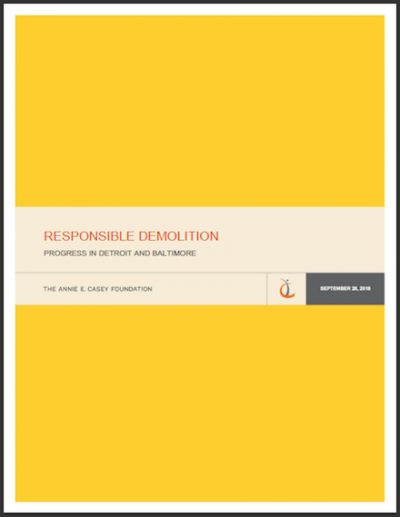The Problem
Four years after the end of the Great Recession, the Detroit Land Bank Authority owned nearly one-quarter of the 388,000 land parcels throughout the city — and approximately 30,000 of them included vacant buildings.

This brief — focused on redevelopment efforts in Detroit — tells how the city looked to Baltimore to develop responsible demolition protocols and deconstruction practices that both protected the environment and spurred job growth.
By properly handling demolition, removing the materials from the site and refilling vacant lots with soil from a good source, previously vacant parcels can become an asset for neighbors or real estate developers, who can purchase the lots without having to take on the risk and cost of abating a potentially polluted site.
We hope you'll find value in this report. We’d love to get a little information from you, which we'll use to notify you about relevant new resources.